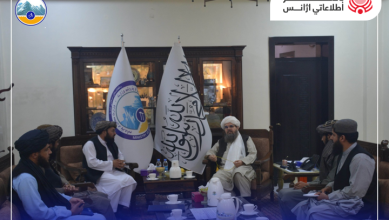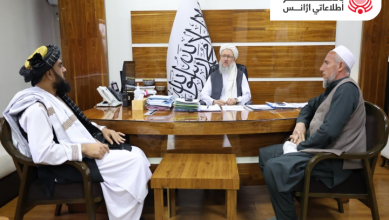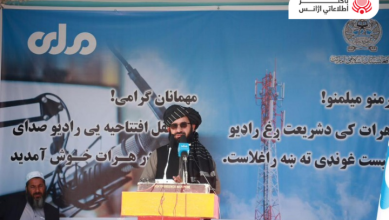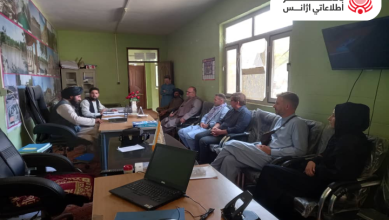
Sunday September 25, 2016
Kabul (BNA) SAARC was established in 1985 with the principle objectives of promoting welfare of the peoples of South Asia and improving their quality of life through accelerated economic growth, social progress and cultural development in the region.
Though, SAARC commenced with limited areas of cooperation at its inception, today it encompasses diverse areas including culture. Attaching a high priority to culture, the heads of states at the tenth SAARC summit in Colombo in 1998, recognized that South Asia, while reflecting a rich, complex and varied plurality of cultural and religious traditions, is heir to a profound common civilizational continuum of great antiquity which constitutes a historical basis for sustaining harmonious relations among the people in the region. Therefore, the SAARC culture Center based in Colombo was established to work on promoting the culture and history of the South Asian Nations. Bamyan is a city in which thousands of mysteries are hidden in its every rock, the ruins of Gholghola, Chehelborj and Zohak narrate hundreds stories from the magnificent and full of ups and downs history of this ancient territory, and a city that has been the crossroad of big commercial caravan along the Silk Route and was important since long past eras and has always been mentioned in historical documents and evident by tourists and researchers.
Bamyan is the example of abovementioned SAARC prospective and hence 12 years ago, the rich history of this ancient territory, glory of Shamamah and Salsal, the wonderful natural beauties of Band-e-Amir and other cultural sites helped put Bamyan in the list of UNESCO’s world heritage sites and in 2015, Bamyan was gifted the title of the first ever SAARC cultural capital. In the light of cooperation of Bamyan hospitable people and all sided support of the government of the Islamic Republic of Afghanistan, the Ministry of Information and Culture managed to organize the glorious opening ceremony of Bamyan as the first SAARC cultural capital on June 5th of 2015. Based on an agreement reached between the Ministry of Information and Culture and South Asian Association for Regional Cooperation –SAARC, for further glorious celebration of Bamyan as the organization’s cultural capital, some big and diverse cultural programs organized in 2015 in the said province with the participation of SAARC member states’ officials, cultural professionals and artists, aimed at to achieve the basic goal of cultural capital program which is acquaintance of SAARC nations to each other’s culture and values as well as to further expand cultural, economic relations and strengthen friendly ties among the nations of this region and at the same time to introduce cultural-historical commons and values of SAARC member countries to the region and the world.
Following the declaration of Bamyan as SAARC cultural capital, the SAARC artist camp was organized with the participation of proficient and skillful painters of south Asian artists and paved the way for painters to get together under a single ceiling and display their artistic products on their painting pages.
The Artist camp was a good opportunity for SAARC artists, where they shared their artistic experiences with other artists and created new grounds for expansion of artistic relations among SAARC member countries. The beautiful sites and historical monuments of Bamyan gifted them a suitable atmosphere to display their artistic qualities in the beauties of fascinating and magical valley of Bamyan. The artists of South Asia illustrated beauties of Bamyan with brush and colors of their paintings and once again revived Buddha in their painting pages.
During the 2015, a number of activities were also held with participation of the SAARC delegation, including exhibitions, Seminars, Music festivals, Arts and Craft Workshops, Handicrafts bazar, Literary Festival and Food show. In addition, a number of regular festivals and programs were also carried out in Bamyan, including the Silk Road Festival, Skiing Festival and the Buddha Night Festival. With insecurity and financial issues were the main challenges before the closing ceremony of the first ever cultural capital, the event was held on September 21st in Bamyan with participation of a number of the officials, including acting deputy minister on cultural affairs of Ministry of Information and Culture Abdul Ahad Abbasi, senior media advisor and spokesman of MoIC Haroon Hakimi, Bamyan governor Tahir Zahir, SAARC Cultural Center Director and officials from SAARC secretariat as well as local influential and cultural elites.
Addressing the event, Bamyan governor asked SAARC officials and the government not to forget Bamyan, but to further cooperate in economic, cultural and social developments with peace loving people of Bamyan.
“Bamyan people considers protection of the cultural heritage as their main responsibility, and we call on international community to technically, economically and culturally help the Bamyan local government,” Tahir Zahir added, hoping that Bogra as the second cultural capital and SAARC considering the experiences gained in Bamyan, could introduce the rich history and culture of the city to people of the region and world. Thanking all institutions and partners who took part in holding of celebrating Bamyan as the SAARC cultural capital, including the SAARC cultural center, Bamyan provincial governors’ office, MoIC staff, local government and non-governmental agencies of Bamyan and the brave Afghan National Security Forces who took sincere steps and made indefatigable efforts for glorious celebration of Bamyan as the SAARC cultural capital, acting deputy minister on cultural affairs of MoIC Abdul Ahad Abbasi said, selection of Bamyan as the SAARC cultural capital, not only provided the opportunity for introducing of the rich cultural heritage of the province, historical values of the ancient territory to people of the region and the world and development of the tourism industry in the country, especially in Bamyan province, but also, given a chance for further strengthening of friendship ties among the regional nations through holding of such regional occasions and programs with the participation of honorable guests from SAARC, cultural professionals and artists.
“Bogra city of Bangladesh has been chosen as the second SAARC Cultural Capital. I hope that SAARC, as Bamyan was their first experience, could utilize its best in promoting the tourism industry and introducing of the rich culture and civilization of the city,” Abbasi said, adding that despite of so many challenges, Bamyan and the government of Afghanistan tried its best in celebration of the city as the first ever SAARC cultural Capital. Congratulating the government and people of Afghanistan on successful implementation of important events in Bamyan, the SAARC secretariat director Sangye Rinchhin said he was delighted that Bamyan declared as the first SAARC cultural capital, hoping programs held in the province could have enabled the environment for Bamyan to enhance its image and profile to the region.
“Let me to assure you that SAARC attaches high priority to cultural activities, as they play important role in promoting people to people contact in the region, thus fastening mutual understanding and goodwill among the peoples of the South Asia,” Sangye Rinchin added.
Meanwhile the SAARC Cultural Center Director, Wasanthe Kotuwella said that he was truly mesmerized by the hospitality of the people of Afghanistan and the breathtaking natural scenic beauty of the Band-e-Amir and other heritage sites of Shahr-e-Ghulghola and Shahr-e-Zohak of Bamyan.
“I would like to end my speech with an Afghan proverb, saying the first day you meet you are friends, the next day you meet you are brothers,” he concluded. A number of other influential addressing the ceremony asked SAARC, not to end their programs in Bamyan, but to further organized the events to help connect the people of South Asia and introduce the region’s rich civilization to world. The global scenario of the cultural capitals go to the European Union that has a similar scheme (initially called the European City of Culture) – European Capital of Culture. Launched in 1985, so far more than 40 cities have been designated under these programs. For the Arab world a similar scheme is in operation since 1996, where the Arab League designates an Arab Capital of Culture. So far 15 cities have been so designated. Islamic Educational, Cultural and Scientific Organization (or (ISESCO), started a scheme for Capital of Islamic Culture in 2005, with Makkah Al- Mukarramah (Saudi Arabia) as the first Capital. From the next year, three cities will be chosen annually for Arab, Asian and African regions respectively. So far 27 Cities have been bestowed the status of the Capital of Islamic Culture, while 30 other cities have been nominated till 2024. Ghazni was declared as the Capital of Islamic Culture for Asian region in 2013. For the Americas, the NGO, American Capital of Culture Organization, which has the backing of the Organization of American States (OAS), selects one city in the Americas annually to serve as the American Capital of Culture for a period of one year. This scheme was started in 1997. Bangladesh’s Bogra city, a 3rd century BC archaeological site was declared the second SAARC cultural capital for 2016-2017. It will host cultural festivals from 2016 to 2017. This is one of the earliest sites discovered for urban archaeology in Bangladesh.
Declaration of cultural capitals by SAARC, aims to provide the ground for mass attraction of the tourists, further developments of the cities as well as boosting the people to people contact and introducing of the rich history and civilization of the South Asia.
Arefi




